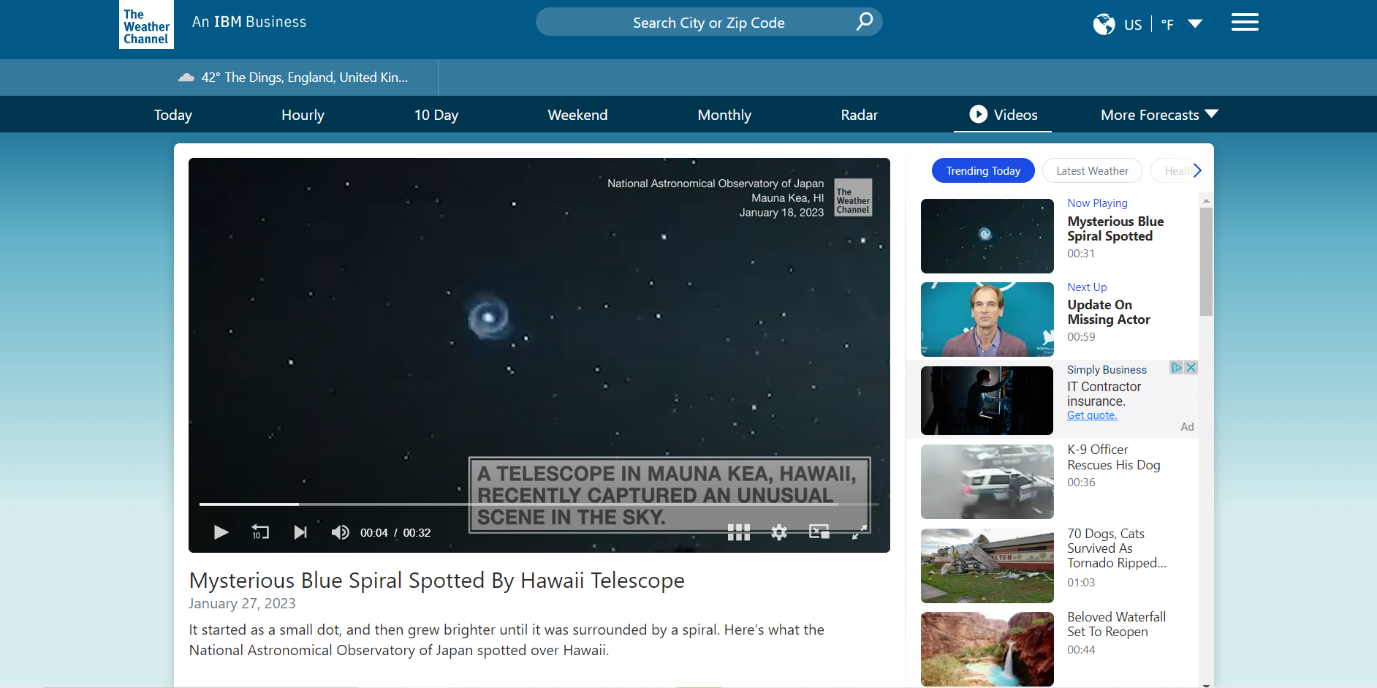The authors of different stories usually want to attract readers’ attention and ensure they are interested in reading the text. Therefore, immersive techniques were developed to show writers how their writing can keep people’s attention. There are four main types of methods, which are called immersive reading, stories, experience, and effects. All these aspects were used in Exodus: Never the Same Every Year as the authors added a clear and short text in the cornet to ensure the readers’ experience was not destroyed. Moreover, the story catches the attention of the readers and affects their perceptions by stating, “Telescope recently captured an unusual scene in the sky” (Figure 1). The impact of these techniques is massive as readers stay interested from the beginning until the end of the story.

Viewpoint techniques are used to show the desires of the research, observations, and feelings of the creator or actor. Writers of the stories express their ideas through speech, thoughts, and implicit markers. In Exodus: Never the Same Every Year, the use of viewpoint techniques is obvious as it shows the process of observation of the object in the sky, the research results which state that it is a normal condition, and the feeling of people when they did not know the cause of the condition. Viewing viewpoint techniques help form a research process and correctly build the structure of thoughts. When readers understand the main reasons for phenomena, the level of perception increases, and the emotions become more restrained.
The direct mode was not used in Exodus: Never the Same Every Year, as the author did not provide their unique quotes. However, the indirect mode was used to show the results of observation: “The most likely explanation was a SpaceX launch that sent a GPS satellite into orbit” (Kea). The use of direct and indirect modes is important in the story as these techniques help to build trust between the writer and the reader. The direct quotes from writers make people believe in the texts and develop their perceptions. The external mode was used in the news as the comments from the author were provided after the news was published. The cause of the problem was revealed in the story, and I realized during the reading that this is a type of internal narrative mode. Multimodal elements flourish the text and catch attention, as it might be impossible to do with alphabetic text.
Direct, indirect, internal, and external techniques can attract a wider target audience as diverse processes are used for interest attraction. Van Krieken believes that multiple media and modes used in writing can make stories more comprehensive: “multiple media formats as a means to produce compelling stories” (3). The fact that only some methods are used in the story made my experience stronger; my engagement did not meet all the criteria of multimodal nonfiction, and I should pay less attention to text-only news articles. This knowledge in multimodal storytelling will help me become a better narrator and use techniques according to the target audience’s preference. In conclusion, multimodal storytelling is one of the main aspects of the narrator’s work, which will help me to succeed in the field of study and tell educative stories to a more scientific audience to gain a specific experience.
Works Cited
Kea, Mauna. “Mysterious blue spiral spotted by Hawaii telescope.” The Weather Channel, Web.
van Krieken, Kobie. “Multimedia Storytelling in Journalism: Exploring narrative techniques in Snow Fall.” Information, vol. 9, no. 123, 2018, pp. 1-14.